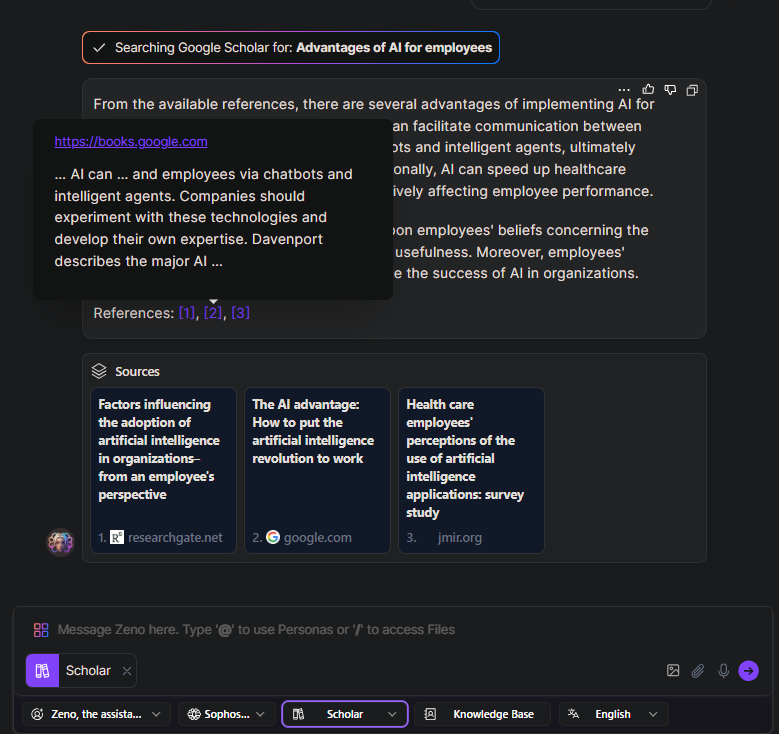A well-written abstract gives information about your entire paper and prepares your readers for your statements. It's not always easy to write an abstract that informs and guides your readers at the same time. As in every writing type, there are steps and rules you need to follow when writing an abstract. But you don't have to worry, we've got you covered!
In this article, we will define what an abstract is and explain how to write it step by step.
TL; DR
- An abstract is a paragraph consisting of 100-250 words that aims to give the reader a quick summary of the entire paper.
- You must briefly explain the purpose, argument, and methods of your paper in your abstract.
- An abstract consists of 5 parts: introduction, purpose, method, results, and conclusion.
- There are 4 types of abstract: informative, descriptive, critical and highlight.
- To create a well-written abstract, you need to do research, add a statement sentence or question, introduce your argument, and add details that support your argument.
- If you want to take your abstract writing to the next level, TextCortex, which offers state-of-the-art AI writing features, is the way to go.
What is an Abstract?
An abstract is a report paragraph consisting of 100-250 words and aims to give a quick summary of your entire paper to the organization or the reader. An abstract should express the thesis, highlight the key points of your work, and suggest your implications and applications. An abstract is not only the summary of your paper but also the guide of your paper for readers.

Purpose of an Abstract
A well-written abstract should quickly and accurately identify the basic content and key points of a paper. Its purpose is to inform the reader and introduce the paper to potential readers. After reading an abstract, readers should learn what the paper is about, the thesis it defends, and the arguments it uses to support the thesis.
5 Parts of an Abstract
As with every type of writing, there is an outline for abstracts. If you want to write an abstract that will attract the attention of readers and comply with the rules, you should not skip any of these parts. An abstract consists of the following five parts:
- Introduction
- Purpose
- Method
- Results
- Conclusion
Types of Abstract
There are different abstracts that you can use for different use cases. Each abstract has different usage areas and a different communicative goal or function. There are four types of abstract: informative, descriptive, critical, and highlight abstract. The abstract type generally used in research papers and essays is informative.
How to Write an Abstract in 5 Steps?
Now that we have learned what an abstract is, its parts and types, we can move on to the topic of how to write a well-prepared abstract. To create a well-written abstract, you need to follow interconnected and complementary steps. Let's take a closer look at how to write an abstract in 5 steps.
Step 1: Research
Before preparing your abstract or even your paper, you need to research the topic in detail. To do this, you can start a literature review, examine peer-reviewed articles, and combine your findings to use them in accordance with your paper. You can also list brief summaries of your findings on a blank page and use them when writing your abstract.

When it comes to researching a topic, manually scanning the literature can be a time-consuming task that often leads to reading misinformative or irrelevant papers, wasting even more time. Fortunately, you can make your research process easier and more efficient with the help of AI. By using an AI tool like ZenoChat, which has a web search feature, you can streamline your research by accessing academic sources. This enables you to quickly find and access the papers that are directly relevant to your topic, without having to spend hours sifting through irrelevant information. Don't waste time on manual research – let ZenoChat do the work for you.
Step 2: Statement Sentence(s)
An abstract should begin with a clear and concise statement or research question. This way, the reader can understand what to expect from your abstract and what questions your paper answers or topics it covers. Additionally, this sentence should be brief so that readers can easily understand the problem or issue.
Step 3: Introduce Your Argument
What you need to write after the statement is to state your research method and design, major findings, and the conclusion you reached. This part should contain the most important key points about your method and content. The purpose of this part is for readers to identify the questions you answer and the main topics you touch on in your paper. This way, readers can understand what information they can find in your paper and how you defend your thesis.
Step 4: Add Details
In this step, you need to explain in a few short sentences the sources you used to increase the reliability of your article and how you support your argument. For example, you can reference the paper you used to support your argument and write about which aspects of this research support your argument. In this way, you can both indicate the reliability of your paper in the abstract and give a more detailed information to the readers.
Step 5: Utilize AI in Your Abstract
No matter what type of written content you create, you can use AI tools in different aspects, and abstract writing is no exception. With AI's advanced language understanding and capabilities, you can use it to summarize content, fix grammar and spelling, and rewrite your sentences in a more catchy or informative form. Let's take a look at how you can use AI for your abstract writing.
Well-written Abstract Example
Below you will find a well-structured abstract on the topif of Natural Language Processing (NLP): Enhancing Human-Machine Communication.
This paper presents a comprehensive review of the current state of natural language processing (NLP), a pivotal technology in the intersection of linguistics, computer science, and artificial intelligence. NLP aims to parse, understand, and generate human languages in a manner that is both valuable and comprehensible to computers. The focus of the review is on the recent advancements in machine learning algorithms and deep learning architectures that have significantly improved the performance of NLP applications. We discuss the evolution of NLP techniques from rule-based systems to sophisticated neural networks that now enable a wide range of applications including machine translation, sentiment analysis, and information extraction. Additionally, the paper outlines the remaining challenges faced by NLP practitioners, particularly in handling linguistic diversity and contextual nuances. Finally, we explore the ethical considerations and the potential societal impacts of advanced NLP technologies. This work not only provides a foundational understanding for those new to the field but also offers a structured insight into the dynamics of NLP that may influence future research directions and applications.
Keywords: Natural Language Processing, Machine Learning, Deep Learning, Sentiment Analysis, Information Extraction, Linguistic Diversity, Ethical Considerations.
TextCortex AI: The Only AI Assistant You Need
If you are looking for an AI writing assistant to help you with various writing tasks, including abstracts, TextCortex is designed for you. With its cutting-edge large language models, writing templates, and advanced AI features, TextCortex aims to boost your productivity and level up your writing. TextCortex is available as a web application nd browser extension. The TextCortex browser extension is integrated with 30,000+ websites and applications, so you can use it to improve your writing anywhere and anytime.
TextCortex Capabilities
TextCortex offers 100+ AI writing templates to cater for your text-based task needs. By using these templates, you can complete tasks that would take hours manually in minutes and significantly reduce your workload. What is more, TextCortex offers a paraphraser tool that you can change the tone of voice of your text, simplify its language or summarize/expand it. Moreover, you can fix the grammar & spelling of your existing texts using the TextCortex “Note Editor” feature or check the plagiarism score of your paper with our plagiarism checker.
Zeno Assistant
TextCortex offers Zeno Assistant, which you can activate with the "Alt/Opt + Enter" shortcut in any textbox on 30,000+ websites, including online word processors such as Pages and Google Docs, and aims to support you in your entire writing process. With Zeno Assistant, you can complete various tasks from outline creation to text expansion with just a single click. Some of the most popular Zeno Assistant features include:
- Rewrite
- Summarize
- Make Longer/Shorter
- Simplify Language
- Continue Writing
- Draft Essay / Blog Post / Outline
- Find Action Items
ZenoChat – The Multifunctional Conversational AI
TextCortex comes with ZenoChat, which will boost your productivity by automating your time-consuming tasks. ZenoChat is a conversational assistant that utilizes advanced large language models and offers a human-like conversation experience to its users. With ZenoChat, you can complete tasks such as research, grammar & spelling fixes, text generation, and tone of voice changing in a conversational format. Thanks to the ZenoChat web search feature, it can generate output by using the entire internet as a data source. Moreover, if you activate the "scholar" option of the ZenoChat web search feature, it will generate output using only academic resources.
ZenoChat offers a fully customizable AI experience thanks to our “Knowledge Bases” and “Individual Personas” features. Our “Individual Personas” feature allows you to adjust the tone of voice, personality, and output style that ZenoChat uses when generating output. Using this feature, you can build ZenoChat as your own digital twin.
Our "Knowledge Bases" feature allows you to upload or connect datasets that ZenoChat will use to generate output. In other words, this feature is designed for you to train ZenoChat with the data you want. For example, using this feature, you can add your paper to ZenoChat and access sample abstracts for your paper by entering a prompt such as "Write a sample abstract".

.png)


.webp)
